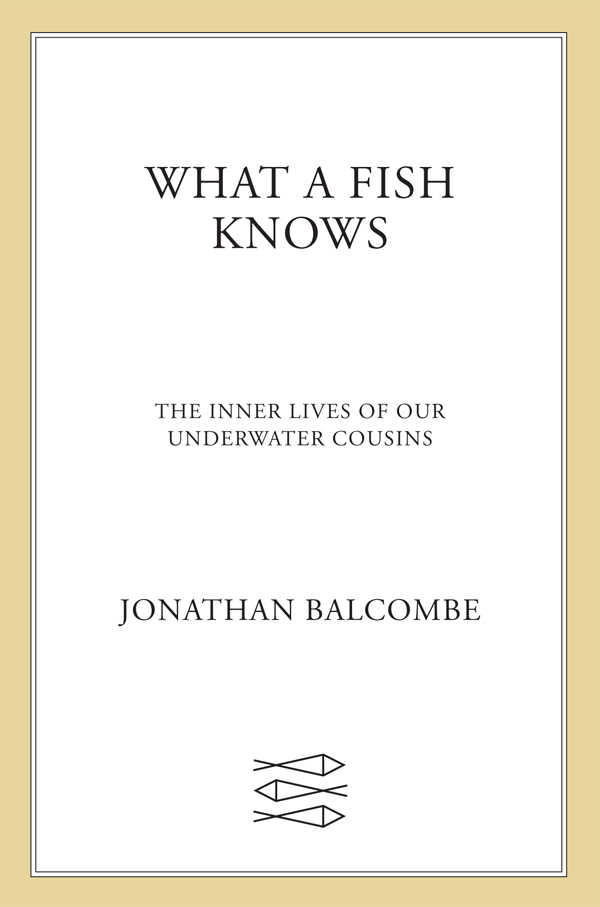Тревожное поколение. Как Великое подключение детства вызывает эпидемию душевных болезней - Джонатан Хайдт
Книгу Тревожное поколение. Как Великое подключение детства вызывает эпидемию душевных болезней - Джонатан Хайдт читаем онлайн бесплатно полную версию! Чтобы начать читать не надо регистрации. Напомним, что читать онлайн вы можете не только на компьютере, но и на андроид (Android), iPhone и iPad. Приятного чтения!
Шрифт:
Интервал:
Закладка:
Monroy, M., & Keltner, D. (2023). Awe as a pathway to mental and physical health. Perspectives on Psychological Science, 18 (2), 309–320. doi.org/10.1177/17456916221094856
Mullan, K. (2018). Technology and children's screen-based activities in the UK: The story of the millennium so far. Child Indicators Research, 11 (6), 1781–1800. doi.org/10.1007/s12187-017-9509-0
Mullan, K. (2019). A child's day: Trends in time use in the UK from 1975 to 2015. British Journal of Sociology, 70 (3), 997–1024. doi.org/10.1111/1468-4446.12369
Müller-Vahl, K. R., Pisarenko, A., Jakubovski, E., & Fremer, C. (2022). Stop that! It's not Tourette's but a new type of mass sociogenic illness. Brain, 145 (2), 476–480. doi.org/10.1093/brain/awab316
Mullola, S., Ravaja, N., Lipsanen, J., Alatupa, S., Hintsanen, M., Jokela, M., & Keltikangas-Järvinen, L. (2012). Gender differences in teachers' perceptions of students' temperament, educational competence, and teachability. British Journal of Educational Psychology, 82 (2), 185–206. doi.org/10.1111/j.2044–8279.2010.02017.x
Murray, R., & Ramstetter, C. (2013). The crucial role of recess in school. Pediatrics, 131 (1), 183–188. doi.org/10.1542/peds.2012–2993
Myers, L. J., LeWitt, R. B., Gallo, R. E., & Maselli, N. M. (2017). Baby FaceTime: Can toddlers learn from online video chat? Developmental Science, 20 (4), Article e12430. doi.org/10.1111/desc.12430
Nagata, J. M., Cortez, C. A., Dooley, E. E., Bibbins-Domingo, K., Baker, F. C., & Gabriel, K. P. (2022). Screen time and moderate-to-vigorous intensity physical activity among adolescents during the COVID-19 pandemic: Findings from the Adolescent Brain Cognitive Development Study. Journal of Adolescent Health, 70 (4), S6. doi.org/10.1016/j.jadohealth.2022.01.014
Nagata, J. M., Ganson, K. T., Iyer, P., Chu, J., Baker, F. C., Pettee Gabriel, K., Garber, A. K., Murray, S. B., & Bibbins-Domingo, K. (2022). Sociodemographic correlates of contemporary screen time use among 9- and 10-year-old children. Journal of Pediatrics, 240, 213–220. e2. doi.org/10.1016/j.jpeds.2021.08.077
Nagata, J. M., Lee, C. M., Yang, J., Al-Shoaibi, A. A. A., Ganson, K. T., Testa, A., & Jackson, D. B. (2023). Associations between sexual orientation and early adolescent screen use: Findings from the Adolescent Brain Cognitive Development (ABCD) Study. Annals of Epidemiology, 82, 54–58. e1. doi.org/10.1016/j. annepidem.2023.03.004
Nagata, J. M., Singh, G., Sajjad, O. M., Ganson, K. T., Testa, A., Jackson, D. B., Assari, S., Murray, S. B., Bibbins-Domingo, K., & Baker, F. C. (2022). Social epidemiology of early adolescent problematic screen use in the United States. Pediatric Research, 92 (5), 1443–1449. doi.org/10.1038/s41390-022-02176-8
National Addiction & HIV Data Archive Program. (n. d.-). Monitoring the future: A continuing study of American youth [8th– and 10th-grade data sets]. www.icpsr.umich.edu/web/NAHDAP/series/35
National Addiction & HIV Data Archive Program. (n. d.-b). Monitoring the future: A continuing study of American youth [12th-grade data sets]. www.icpsr. umich. edu/web/NAHDAP/series/35/
National Center for Education Statistics. (n. d.). National Assessment of Educational Progress (NAEP) [Data sets]. U. S. Department of Education. www.nationsreportcard.gov/ndecore/xplore/ltt
Nauta, J., Martin-Diener, E., Martin, B. W., van Mechelen, W., & Verhagen, E. (2014). Injury risk during different physical activity behaviours in children: A systematic review with bias assessment. Sports Medicine, 45, 327–336. doi.org/10.1007/s40279-014-0289-0
Nesi, J., Mann, S., & Robb, M. B. (2023). Teens and mental health: How girls really feel about social media. Common Sense. www.commonsensemedia.org/sites/default/files/research/report/how-girls-really-feel-aboutsocial-media-researchreport_web_final_2.pdf
New revised standard version Bible. (1989). National Council of the Churches of Christ in the U. S. A.
Nuwer, H. (1999). Wrongs of passage: Fraternities, sororities, hazing, and binge drinking. Indiana University Press.
O'Brien, J., & Smith, J. (2002). Childhood transformed? Risk perceptions and the decline of free play. British Journal of Occupational Therapy, 65 (3), 123–128. doi.org/10.1177/030802260206500304
Office for National Statistics. (2022, 24 февраля). Young people not in education, employment, or training (NEET), UK: February 2022. www.ons.gov.uk/employmentandlabourmarket/peoplenotinwork/unemployment/bulletins/youngpeoplenotineducationemploymentortrainingneet/february2022
Ogas, O., & Gaddam, S. (2011). A billion wicked thoughts: What the world's largest experiment reveals about human desire. Dutton.
Orben, A. (2020). Teenagers, screens, and social media: A narrative review of reviews and key studies. Social Psychiatry and Psychiatric Epidemiology, 55, 407–414. doi.org/10.1007/s00127-019-01825-4
Orben, A., & Przybylski, A. K. (2019). The association between adolescent well-being and digital technology use. Nature Human Behaviour, 3, 173–182. doi.org/10.1038/s41562-018-0506-1
Orben, A., Przybylski, A. K., Blakemore, S., & Kievit, R. A. (2022). Windows of developmental sensitivity to social media. Nature Communications, 13, Article 1649. doi.org/10.1038/s41467-022-29296-3
Orces, C. H., & Orces, J. (2020) Trends in the U. S. childhood emergency department visits for fallrelated fractures, 2001–2015. Cureus, 12 (11), Article e11629.
Organization for Economic Cooperation and Development (OECD). PISA survey [Data sets]. www.oecd.org/pisa/data/
Owens, J., Au, R., Carskadon, M., Millman, R., Wolfson, A., Braverman, P. K., Adelman, W. P., Breuner, C. C., Levine, D. A., Marcell, A. V., Murray, P. J., & O'Brien, R. F. (2014). Insufficient sleep in adolescents and young adults: An update on causes and consequences. Pediatrics, 134 (3), e921 – e932. dx. doi.org/10.1542/peds.2014–1696
Pallavicini, F., Pepe, A., & Mantovani, F. (2022). The effects of playing video games on stress, anxiety, depression, loneliness, and gaming disorder during the early stages of the COVID-19 pandemic: PRISMA systematic review. Cyberpsychology, Behavior, and Social Networking, 25 (6), 334–354. doi.org/10.1089/cyber.2021.0252
Parker, K. (2021, 8 ноября). Why the gap between men and women finishing college is growing.
Pew Research Center. www.pewresearch.org/short-reads/2021/11/08/whats-behind-the-growinggap-between-men-and-women-in-college-completion/
Parker, K., & Igielnik, R. (2020, 14 мая). On the cusp of adulthood and facing an uncertain future: What we know about Gen Z so far. Pew Research Center. www.pewresearch.org/socialtrends/2020/05/14/on-the-cusp-of-adulthood-and-facing-an-uncertain-future-what-we-knowabout-gen-z-so-far-2/
Parodi, K. B., Holt, M. K., Green, J. G., Porche, M. V., Koenig, B., & Xuan, Z. (2022). Time trends and disparities in anxiety among adolescents, 2012–2018. Social Psychiatry and Psychiatric Epidemiology, 57 (1), 127–137. doi.org/10.1007/s00127-021-02122-9
Partelow, L. (2019). What to make of declining enrollment in teacher preparation programs. Center for American Progress. www.americanprogress.org/wpcontent/uploads/sites/2/2019/11/TeacherPrep-report1.pdf
Paruthi, S., Brooks, L. J., D'Ambrosio, C., Hall, W. A., Kotagal, S., Lloyd, R. M., Malow, B. A., Maski, K., Nichols, C., Quan, S. F., Rosen, C. L., Troester, M. M., & Wise, M. S. (2016). Recommended amount of sleep for pediatric populations: A consensus statement of the American Academy of Sleep Medicine. Journal of Clinical Sleep Medicine, 12 (6), 785–786. doi.org/10.5664/jcsm.5866
Pascal, B. (1966). Pensées. Penguin Books.
Pedersen, J. (2022). Recreational screen media use and its effect on physical activity, sleep, and
Прочитали книгу? Предлагаем вам поделится своим отзывом от прочитанного(прослушанного)! Ваш отзыв будет полезен читателям, которые еще только собираются познакомиться с произведением.
Уважаемые читатели, слушатели и просто посетители нашей библиотеки! Просим Вас придерживаться определенных правил при комментировании литературных произведений.
- 1. Просьба отказаться от дискриминационных высказываний. Мы защищаем право наших читателей свободно выражать свою точку зрения. Вместе с тем мы не терпим агрессии. На сайте запрещено оставлять комментарий, который содержит унизительные высказывания или призывы к насилию по отношению к отдельным лицам или группам людей на основании их расы, этнического происхождения, вероисповедания, недееспособности, пола, возраста, статуса ветерана, касты или сексуальной ориентации.
- 2. Просьба отказаться от оскорблений, угроз и запугиваний.
- 3. Просьба отказаться от нецензурной лексики.
- 4. Просьба вести себя максимально корректно как по отношению к авторам, так и по отношению к другим читателям и их комментариям.
Надеемся на Ваше понимание и благоразумие. С уважением, администратор knigkindom.ru.
Оставить комментарий
-
 Ариэль летит24 декабрь 21:18
А в этой книге открываются такие интриги, такие глубины грязной политики, и как противостояние им- вечные светлые истины, такие,...
Сеятели ветра - Андрей Васильев
Ариэль летит24 декабрь 21:18
А в этой книге открываются такие интриги, такие глубины грязной политики, и как противостояние им- вечные светлые истины, такие,...
Сеятели ветра - Андрей Васильев
-
 Гость Екатерина24 декабрь 15:37
Очень юморная книга. Спасибо автору...
Жена с татуировкой дракона - Кристина Юрьевна Юраш
Гость Екатерина24 декабрь 15:37
Очень юморная книга. Спасибо автору...
Жена с татуировкой дракона - Кристина Юрьевна Юраш
-
 Нинель24 декабрь 12:30
Хорошая история, душевная, практически реальная, веришь автору, что так и было...хочу такого же Макса, просто до мурашек... Но,...
Проще, чем кажется - Юлия Устинова
Нинель24 декабрь 12:30
Хорошая история, душевная, практически реальная, веришь автору, что так и было...хочу такого же Макса, просто до мурашек... Но,...
Проще, чем кажется - Юлия Устинова










